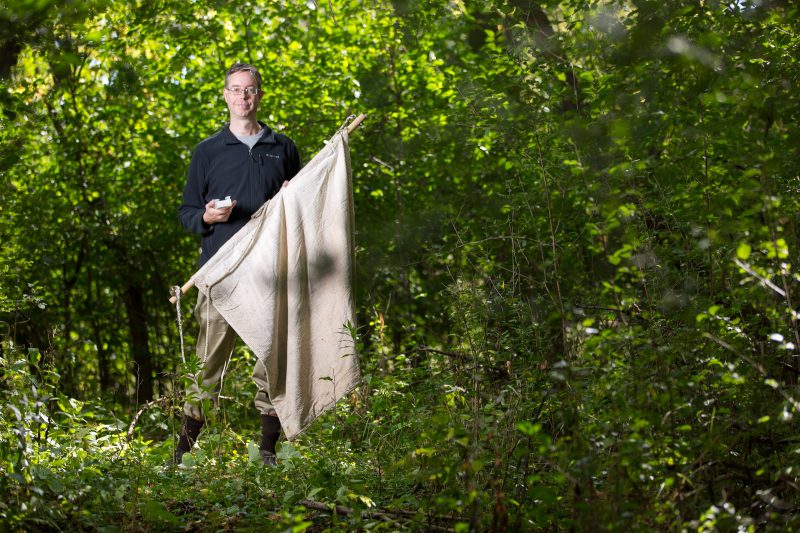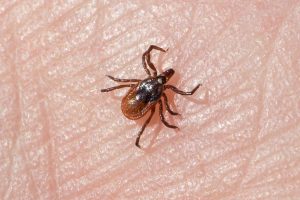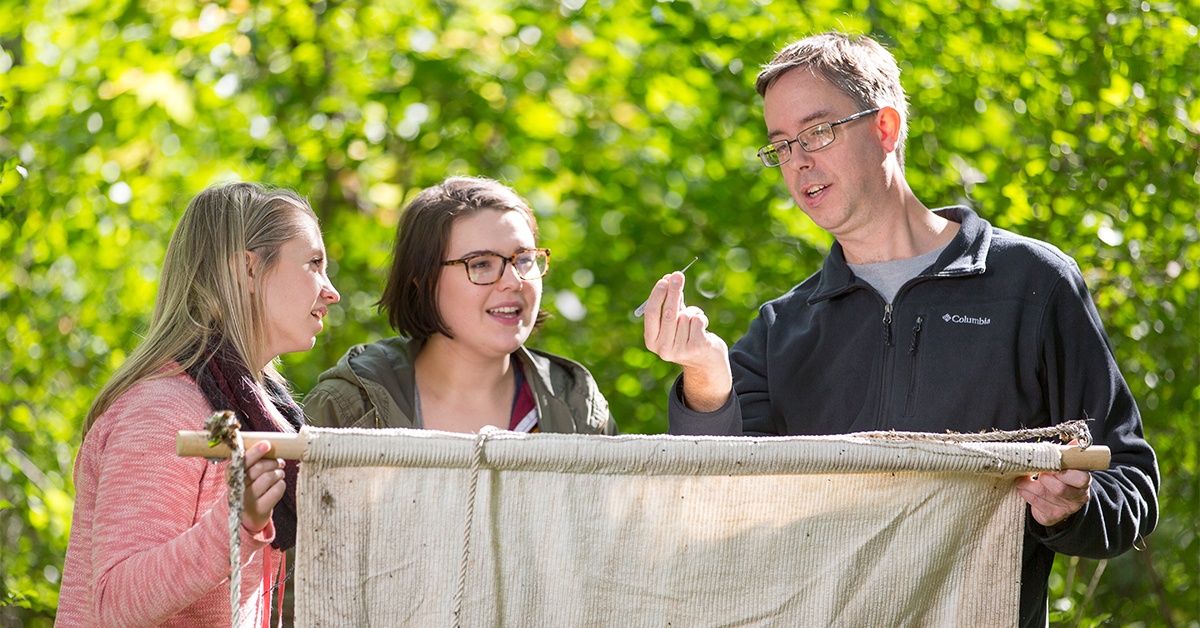Over seven days in December, 2022, Jon Oliver hit a scientific trifecta. The University of Minnesota elected him into the Academy for Excellence in Team Science; the National Institutes of Health (NIH) awarded him a $3.4 million, five-year grant; and the journal Science accepted a paper he co-wrote. It was a good week, and it showed the power and rewards of scientific collaboration.
Oliver, an assistant professor in the School of Public Health, is a public health entomologist and his research expertise lies primarily in the relationship between ticks and emerging tick-borne pathogens relevant to human health. When ticks become active in early spring and the fall, you’ll see Oliver in the media educating Minnesotans about how to avoid tick bites and potential Lyme disease.

In 2022, Oliver joined a team called MNPRO (Minnesota Center for Prion Research and Outreach) that’s studying chronic wasting disease (CWD), a prion disease concentrated in deer and potentially capable of human transmission. Prions are pathogens that cause proteins in the brain to fold abnormally and prion-instigated diseases are always fatal.
The “center” in MNPRO’s name is really a collaborative of experts from colleges across the University and its members, including Oliver, were elected to the Academy for Excellence in Team Science, the newest category in the University’s honored “academies” program that acknowledges exceptional and innovative work.
“In my opinion, almost all science — really all of it, actually — is team science,” says Oliver. “What I really like about cross-disciplinary collaborations such as MNPRO is that you can come together and produce ideas that you would never be able to do, either on your own or with people who are directly in the same field as you.”

The site of Oliver’s research with MNPRO is a former deer farm in southwestern Minnesota that had been dumping CWD-infected deer carcasses and contaminating the environment with prions. Oliver identified fly maggots that came out of these carcasses and had been infected with the CWD prion. He’s also looking at the potential for ticks to transmit or be involved with CWD transmission or environmental distribution.
“We’ve been doing studies about what happens when ticks are exposed to the CWD prion,” Oliver says. “If the ticks are allowed to feed on infected blood and then molt (shedding their skin to grow new skin), do they retain the infection, and, if so, are they able to transmit the prions later on?”
Out in the field
Oliver’s award-winning team included College of Veterinary Medicine Assistant Professor Peter Larsen and the two also paired up as co-principal investigators on the recent NIH grant. Larsen, a mammalogist by training, is interested in taking technologies into the field to capture real-time diagnostics and Oliver wants to know what pathogens ticks are carrying around with them. NIH awarded the grant for them to test out a new use of nanopore sequencing technology, which identifies the DNA of molecules as they pass through an array of tiny holes. Oliver and Larsen will use this technology in a candy-bar-sized tool that they’ll take into the field.

“With one sample, we can look at a tick’s DNA in order to determine what species of tick we have,” says Oliver. “We can also discover the DNA from the last blood meal that the tick took to identify the animal host, as well as see whatever pathogens are present in the tick.”
Is the tool a game-changer in terms of pathogen surveillance?
“It could be,” says Oliver. “We’re testing its limits at this point to determine if it has the kind of sensitivity and specificity that will let it be a more general-use surveillance tool as opposed to just something that college professors are using.”
Discovering a new gene
The journal Science is one of the highest-impact publications in the field of science and having it accept your work is a coup. In his capacity of exploring the interactions of bacterial pathogens and deer ticks, Oliver was co-author on a paper that Science published in January. It describes the discovery of a deer tick gene named “Dome-1” that shows the evolutionary dependence of the tick on its mammalian hosts to trigger the tick’s immune system and help it develop as an organism.
“It’s a cool system where basically the tick relies on components from the vertebrates it’s feeding on in order to develop correctly between life stages,” says Oliver.
All of Oliver’s collaborative work is vital to a world where climate change is having a major influence in the production and spread of pathogens that put the planet at risk.
“People often forget that health is a continuum, and it includes not just human public health, but also animal health and the health of the environment,” Oliver says. “What I really like about these collaborations is their focus on the essential interconnectedness of human health, animal health, and ecology and how we must think of them as one essential system.”

